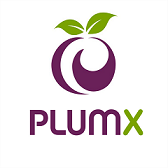Farmers' Awareness and Practices of Sorghum-Legume Intercropping in Semi-Arid Regions of Tanzania
Abstract
Low sorghum yield among smallholder farmers undermines food security, income, and farming system sustainability in Tanzania. This study, conducted in Mbabala, Matumbulu, and Mpunguzi wards of Dodoma City, examined farmers’ perceptions, awareness, and practices of sorghum–legume intercropping. The objectives were to assess knowledge of intercropping, preferred legumes, and perceived effects on soil fertility and sorghum yield. A mixed-methods cross-sectional design was used, combining structured questionnaires with Focus Group Discussions and key informant interviews. In total, 243 respondents were surveyed. Data were analysed with SPSS and Past 4.03 using descriptive statistics (frequencies, means, medians, mode, skewness, kurtosis, percentages) and Cochran’s Q test. Findings showed that 84.4% of farmers were aware of sorghum–legume intercropping. Cowpea and groundnut were the most preferred legumes, valued for yield potential (63%) and market demand (20.6%). Cochran’s Q test indicated significant differences in preference (p < 0.001). In practice, 92.6% emphasised improved seed access as critical, yet 80.2% relied on saved seed, with 71.6% satisfied. Satisfaction scores averaged 3.8 (median = 4, skewness = –0.6, kurtosis = 2.1) on a five-point scale, reflecting positive perceptions. Fertiliser use was reported by 72.8% of respondents, while 41.6% applied manure. Sorghum–legume intercropping supports ecological intensification by improving biodiversity, enhancing nitrogen fixation, and lowering dependence on external inputs. Nonetheless, limited adoption of crop rotation and integrated soil fertility management constrains agroecosystem sustainability. The study highlights the importance of agroecology-based interventions in enhancing productivity and resilience among smallholder farmers
Downloads
References
Absakine, S. I. (2024). Effective Strategies to Encourage the Cultivation of Sorghum and Corn in the African Sahel: An Analysis of Chad. Agricultural Sciences, 15(10), 1112-1131. https://doi.org/10.4236/as.2024.1510060
Ahmad Yahaya, M., Shimelis, H., Nebie, B., Ojiewo, C. O., & Danso-Abbeam, G. (2022). Sorghum production in Nigeria: opportunities, constraints, and recommendations. Acta Agriculturae Scandinavica, Section B—Soil & Plant Science, 72(1), 660- 672. https://doi.org/10.1080/09064710.2022.2047771
AL-Falahi, A. H., Barry, S., Gebrechorkos, S. H., Spank, U., & Bernhofer, C. (2023). Potential of Traditional Adaptation Measures in Mitigating the Impact of Climate Change. Sustainability, 15(21), 15442. https://doi.org/10.3390/su152115442
Altaye, S. Z., Nida, H., Sori, D., Begna, T., Teressa, T., Gichile, H., ... & Mohammed, M. (2024). Empowering Smallholder Sorghum Farmers for Resilience: Lessons from a Community-Based Seed Multiplication Scheme in West Hararghe, Ethiopia. Agriculture, Forestry and Fisheries 13(4), 116- 125. https://doi.org/10.11648/j.aff.20241304.13
Ambaw, G., Recha, J. W., Gitau, A., & Solomon, D. (2024). Regional Training on Climate-Smart Agriculture, Soil Fertility Management, and Soil Health Monitoring in Eastern and Southern Africa. https://hdl.handle.net/10568/168806
Apondo, J. O. (2021). Digitalization of Multi-stakeholder Structures Along Sorghum Value Chain in Siaya County (Doctoral dissertation, University of Nairobi). http://erepository.uonbi.ac.ke/handle/11295/155832
Arumugam, P., Chemura, A., Aschenbrenner, P., Schauberger, B., & Gornott, C. (2023). Climate change impacts and adaptation strategies: an assessment of sorghum for Burkina Faso. European Journal of Agronomy, 142,126655. https://doi.org/10.1016/j.eja.2022.126655
Atsiaya, G. O., Gido, E. O., Sibiko, K. W., & Mbudzya, J. J. (2022). Factors influencing access to agrometeorological information among sorghum farmers. Empirical evidence among sorghum farmers in Busia County, Kenya. African Journal of Rural Development, 7(4), 430-444.
Babu, P. K. (2024). Traditional Agri/Horticultural Crops, Farming Practices and Conservation in the Himalayan Region. In The Resilience of Traditional Knowledge Systems for a Sustainable Future: A Focus on Agriculture and Food Practices in the Himalayas (pp. 59-90). Cham: Springer Nature Switzerland. https://doi.org/10.1007/978-3-031-56858-9_3
Baitu, G. P., Idress, K. A. D., Gadalla, O. A. A., & Öztekin, Y. B. (2023, October). Mapping Biomass Energy Potential from Agricultural Residues in Tanzania. In International Congress on Agricultural Mechanization and Energy in Agriculture (pp. 84-93). Cham: Springer Nature Switzerland. https://doi.org/10.1007/978-3-031-51579-8_9
Begna, T. (2021). Effect of striga species on sorghum (Sorghum bicolor L. Moench) production and its integrated management approaches. International Journal of Research Studies in Agricultural Sciences, 7(7), 10-22. http://dx.doi.org/10.20431/2454-6224.0707002
Belete, T., & Yadete, E. (2023). Effect of Mono Cropping on Soil Health and Fertility Management for Sustainable Agriculture Practices: A Review. Journal of Plant Sciences, 11(6), 192– 197. https://doi.org/10.11648/j.jps.20231106.13
Bhol, N., Parida, S., & Dash, A. (2024). Agroforestry: A multifunctional land use system for sustainable agricultural production under a climate change scenario. International Journal of Plant & Soil Science, 36(11), 361-376. https://doi.org/10.9734/ijpss/2024/v36i115153
Birhanu, M. W., & Negussie, Z. T. (2024). Arbuscular Mycorrhizal (AM) Fungi Symbiosis in Sustainable Production of Sorghum (Sorghum bicolor L. Moench) Under Drought Stress: An Emerging Biofertilizer in Dryland Areas. Advances in Agriculture, 2024(1), 8814543. https://doi.org/10.1155/2024/8814543
Blaise, G. C., Allred, S. B., Morreale, S. J., Meredith, G. R., Sprenkle-Hyppolite, S., Buck, L. E., ... & Constas, M. A. (2024). Exploring the scalability and sustainability of community-based agroforestry to achieve planetary health benefits in Haiti’s Lower Artibonite Valley. PLOSClimate, 3(10),e0000406.https://doi.org/10.1371/journal.pclm.0000406
Bogale, S. A. (2021). Market orientation and performance of agro-food value chains in developing and emerging markets: the case of maize, teff, and beans seed supply chains in Ethiopia (Doctoral dissertation, Wageningen University and Research).
Breen, C., Ndlovu, N., McKeown, P. C., & Spillane, C. (2024). Legume seed system performance in sub-Saharan Africa: barriers, opportunities, and scaling options. A review. Agronomy for Sustainable Development, 44(2),20. https://doi.org/10.1007/s13593-024-00956-6
Carroll II, D.A.(2024). Sustainability of Rural Development Programs in Improving Smallholder Farmer Livelihoods, Encouraging Adoption of Good Agricultural Practices, and Promoting Environmental Protection: A Mixed-Methods Post-Program Study of Sanmatenga Province, Burkina Faso (Doctoral dissertation, Tufts University, Gerald J. and Dorothy R. Friedman School of Nutrition Science and Policy).
Carvalho, A. A. D., Montenegro, A. A. D. A., de Lima, J. L., Silva, T. G. F. D., Pedrosa, E. M. R., & Almeida, T. A. B. (2021). Coupling water resources and agricultural practices for sorghum in the semi-arid environment. Water, 13(16),2288. https://doi.org/10.3390/w13162288
Chadalavada, K., Kumari, B. R., & Kumar, T. S. (2021). Sorghum mitigates climate variability and change on crop yield and quality. Planta, 253(5), 113. https://doi.org/10.1007/s00425-021-03631-2
Chege, C., Onyango, K., Bodjerenou, S., Schmidt, M., Heike, H., & Ostermann, H. (2024). Adapting green innovation centers to climate change: Reducing post-harvest loss and improving processing for target groups.
Chidawanyika, F., Muriithi, B., Niassy, S., Ouya, F. O., Pittchar, J. O., Kassie, M., & Khan, Z. R. (2023). Sustainable intensification of vegetable production using the cereal ‘push-pull technology’: benefits and one health implications. Environmental Sustainability, 6(1), 25-34. https://doi.org/10.1007/s42398-023-00260-1
Ciampitti, I. A., Prasad, P. V., Kumar, S. R., Kubsad, V. S., Adam, M., Eyre, J. X., ... & Gambin, B. (2020). Sorghum management systems and production technology around the globe. Sorghum in the 21st century: Food–fodder–feed–fuel for a rapidly changing world, 251-293. https://doi.org/10.1007/978-981-15-8249-3_11
Dossa, E. N., Shimelis, H., Shayanowako, A. I., & Laing, M. D. (2023). A meta‐analysis of the effects of Striga control methods on maize, sorghum, and major millets production in sub‐Saharan Africa. Crop Science, 63(2), 460-479. https://doi.org/10.1002/csc2.20889
Dugassa, M. (2023). The role of cereal legume intercropping in soil fertility management: Review. Journal of Agriculture and Aquaculture, 5(1), 1-8.
Dunjana, N., Dube, E., Chauke, P., Motsepe, M., Madikiza, S., Kgakatsi, I., & Nciizah, A. (2022). Sorghum as a household food and livelihood security crop under climate change in South Africa: A review. South African Journal of Science, 118(9-10), 1-6. https://doi.org/10.17159/sajs.2022/13340
Eissa, A., Tong, G., Sagali, H. L., Yusif, S., & Fadol, A. A. (2024). Assessing the impact of financial resources on Sorghum yield in Al-Qadarif State, Sudan. Discover Agriculture, 2(1), 84. https://doi.org/10.1007/s44279-024-00098-z
FAO. (2021). Intercropping Agriculture System Agriculture Technical Working Group (ATWG). 1–6.
Fu, Z., Chen, P., Zhang, X., Du, Q., Zheng, B., Yang, H., Luo, K., Lin, P., Li, Y., Pu, T., Wu, Y., Wang, X., Yang, F., Liu, W., Song, C., Yang, W., & Yong, T. (2023). Maize-legume intercropping achieves yield advantages by improving leaf functions and dry matter partition. BMC Plant Biology, 23(1), 1–18. https://doi.org/10.1186/s12870-023-04408-3
George, T. T., Obilana, A. O., Oyenihi, A. B., Obilana, A. B., Akamo, D. O., & Awika, J. M. (2022). Trends and progress in sorghum research over two decades, and implications for global food security. South African Journal of Botany, 151, 960-969. https://doi.org/10.1016/j.sajb.2022.11.025
Ghanem, H., Ehui, S., Omamo, S. W., & Jenane, C. (2024). Climate change and food security in Africa’s drylands. In Climate Change and Sustainable Agro-ecology in Global Drylands (pp. 161-185). GB: CABI. https://doi.org/10.1079/9781800624870.0008
Giller, K. E., Delaune, T., Silva, J. V., van Wijk, M., Hammond, J., Descheemaeker, K., ... & Andersson, J. A. (2021). Small farms and development in sub-Saharan Africa: Farming for food, for income, or for lack of better options. Food Security, 13(6), 1431-1454. https://doi.org/10.1007/s12571-021-01209-0
Hambloch, C., Kahwai, J., & Mugonya, J. (2021). Contextualizing private sector-based seed system development: The case of sorghum in Eastern Africa. Outlook on Agriculture, 50(4), 378-391. https://doi.org/10.1177/00307270211056357
Hassan, M. M., Daoud, M. A., & Ibrahim, M. E. (2024). Policy paper: interventions for sustainable millet production in Sudan. Discover Agriculture, 2(1), 106. https://doi.org/10.1007/s44279-024-00122-2
Hossain, M. S., Islam, M. N., Rahman, M. M., Mustafa, M. G., & Khan, M. A. R. (2022). Sorghum: A prospective crop for climatic vulnerability, food and nutritional security. Journal of Agriculture and Food Research, 8, 8,100300. https://doi.org/10.1016/j.jafr.2022.100300
Hove-Sibanda, P., Awino, Z. B., & Agyemang, E. (2025). Sustainable Food Supply Chains and Agricultural Logistics in Africa. In Eco-Logistics and Sustainable Supply Chain Innovations (pp. 267-320). IGI Global Scientific Publishing. https://doi.org/10.4018/979-8-3693-6175-7.ch011
Hammer, Ø., Harper, D. A. T., & Ryan, P. D. (2001). PAST - Palaeontological Statistics. Paleontological Statistics, 1999, 1–31.
Homepage, J. (2025). Eastern Africa Journal of Official Statistics. 1(1), 1–13.
Toker, P., Canci, H., Turhan, I., Isci, A., Scherzinger, M., Kordrostami, M., & Yol, E. (2024). The advantages of intercropping to improve productivity in food and forage production–a review. Plant Production Science, 27(3), 155– 169. https://doi.org/10.1080/1343943X.2024.2372878
Isaacs, K., Weltzien, E., Some, H., Diallo, A., Diallo, B., Sidibé, M., ... & Rattunde, F. W. (2024). Increasing sorghum yields for smallholder farmers in Mali: the evolution towards a context-driven, on-farm, gender-responsive sorghum breeding program. Frontiers in Sustainable Food Systems, 8, 1334385. https://doi.org/10.3389/fsufs.2024.1334385
Izuchukwu, A., Erezi, E., & David Emeka, E. (2023). Assessing the Impact of Farmer-to-Farmer Communication Networks on Knowledge Sharing and Adoption of Sustainable Agricultural Practices in Africa. Int. J. Agric. Earth Sci, 9, 58-76. 10.56201/ijaes.v9.no4. 2023.pg58.76
Jaiswal, N., Meghalatha, K., Nishad, T. L., Khan, A., & Jatav, D. K. (2023). Revitalizing Agriculture Extension Services for Millets: A Comprehensive Review of Strategies, Challenges, and Innovations. International Journal of Plant & Soil Science, 35(23), 307-315. https://doi.org/10.9734/ijpss/2023/v35i234245
Jensen, E. S., Carlsson, G., & Hauggaard-Nielsen, H. (2020). Intercropping of grain legumes and cereals improves the use of soil N resources and reduces the requirement for synthetic fertilizer N: A global-scale analysis. Agronomy for Sustainable Development,
Lawal, T. O., Abdulsalam, M., Mohammed, A., & Sundararajan, S. (2023). Economic and Environmental Implications of Sustainable Agricultural Practices in Arid Regions: A Cross-disciplinary Analysis of Plant Science, Management, and Economics. International Journal of Membrane Science and Technology, 10(3), 3100– 3114. https://doi.org/10.15379/ijmst.v10i3.302740(1).https://doi.org/10.1007/s13593-020-0607-x
Kadilikansimba, P. B., Sife, A. S., & Machimu, G. M. (2025). Source credibility and adoption of improved sorghum farming practices in Dodoma, Tanzania. Journal of Agricultural Education and Extension, 8622, 1–20. https://doi.org/10.1080/1389224X.2025.252636
Kalema, E. P., Akpo, E., Muricho, G., Ringo, J., Ojiewo, C. O., & Varshney, R. K. (2022). Mapping out market drivers of improved variety seed use: the case of sorghum in Tanzania. Heliyon, 8(1). https://doi.org/10.1016%2Fj.heliyon.2022.e08715
Kalibata, A., Thangata, P., Mutyasira, V., Nhlengethwa, S., & Chirwa, P. W. (2024). Promoting Crop Productivity from Improved Soil Management in Smallholder Farming Systems: Policy Implications for Enhanced Soil Management in Africa. In Trees in a Sub-Saharan Multi-Functional Landscape: Research, Management, and Policy (pp. 113-127). Cham: Springer Nature Switzerland. https://doi.org/10.1007/978-3-031-69812-5_6
Kalumba, J. (2021). Effect of seed generation, rhizobia inoculation and plant density on productivity and seed quality of soybean [Glycine max (l.) Merril] and groundnut [Arachis hypogea (l.)] In Dedza and Machinga districts of Malawi (Doctoral dissertation, Lilongwe University of Agriculture and Natural Resources).
Toker, P., Canci, H., Turhan, I., Isci, A., Scherzinger, M., Kordrostami, M., & Yol, E. (2024). The advantages of intercropping to improve productivity in food and forage production–a review. Plant Production Science, 27(3), 155– 169. https://doi.org/10.1080/1343943X.2024.2372878
Khoddami, A., Messina, V., Vadabalija Venkata, K., Farahnaky, A., Blanchard, C. L., & Roberts, T. H. (2023). Sorghum in foods: Functionality and potential in innovative products. Critical reviews in food science and nutrition, 63(9), 1170- 1186. https://doi.org/10.1080/10408398.2021.1960793
Kimbi, T. G., Sieber, S., Akpo, E., Magomba, C., & Mishili, F. (2024). Key drivers behind contract farming engagement decisions in Tanzania: Empowering Sorghum Farmers. Cogent Social Sciences, 10(1), 2396957. https://doi.org/10.1080/23311886.2024.2396957
Kiprotich, S. (2024). Adoption, Productivity and Return on Investment of Integrated Soil Fertility Management Technologies among Sorghum Farmers in Tharaka-Nithi County, Kenya (Doctoral dissertation, UoEm). http://repository.embuni.ac.ke/handle/embuni/4441
Li, G., Ren, A., Anwar, S., Shi, L., Bai, W., Zhang, Y., & Gao, Z. (2024). Optimizing Soil Health and Sorghum Productivity through Crop Rotation with Quinoa. Life, 14(6), 745. https://doi.org/10.3390/life14060745
Liaqat, W., Altaf, M. T., Barutçular, C., Mohamed, H. I., Ahmad, H., Jan, M. F., & Khan, E. H. (2024). Sorghum: a Star Crop to Combat Abiotic Stresses, Food Insecurity, and Hunger Under a Changing Climate: a Review. Journal of Soil Science and Plant Nutrition, 24(1), 74-101. https://doi.org/10.1007/s42729-023-01607-7
Maitra, S., Hossain, A., Brestic, M., Skalicky, M., Ondrisik, P., Gitari, H., ... & Sairam, M. (2021). Intercropping—A low input agricultural strategy for food and environmental security. Agronomy, 11(2), 343. https://doi.org/10.3390/agronomy11020343
Maiwada, U. D., Qabasiyu, M. G., Dauda, M. H., & Aliyu, A. A. (2024). Effects of 5G Network and Climatic Fluctuations on Sorghum Yield in Nigeria. International Journal of Scientific Research, 4(1), 18-31.
Marenya, P., Narmandakh, D., Kirui, L., Odhong, J. A., Templer, N. A., Agong, D., ... & Abdulsalam, Z. (2024). The economics of seed use and production for farmers and seed enterprises: The case of groundnut, millet, and sorghum. CIMMYT. https://hdl.handle.net/10883/35144
Marimuthu, S., Vanitha, C., Surendran, U., El-Hendawy, S., & Mattar, M. A. (2024). Conception of Improved Blackgram (Vigna mungo L.) Production Technology and its Propagation among Farmers for the Development of a Sustainable Seeds Production Strategy. Sustainability, 16(11), 4750. https://doi.org/10.3390/su16114750
MC, S. C., Chandran, R., Sahib, P. R., & Achuthan, K. (2024). Sustainable livelihoods through cashew cultivation: insights from smallholder farmers in the southern region of India. Discover Sustainability, 5(1), 340. https://doi.org/10.1007/s43621-024-00558-y
Melesse, M. B., Tirra, A.N., Ojiewo, C. O., & Hauser, M. (2021). Understanding farmers’ trait preferences for dual-purpose crops to improve mixed crop–livestock systems in Zimbabwe. Sustainability, 13(10), 5678. https://doi.org/10.3390/su13105678
Mesfin, A. H., & Girma, F. (2022). Understanding sorghum farming system and its implication for future research strategies in humid agro-ecologies in Western Ethiopia. Journal of Agriculture and Food Research, 10, 100456. https://doi.org/10.1016/j.jafr.2022.100456
Miriti, P., Regassa, M. D., Ojiewo, C. O., & Melesse, M. B. (2023). Farmers’ preferences and willingness to pay for traits of sorghum varieties: Informing product development and breeding programs in Tanzania. Journal of Crop Improvement, 37(2), 253- 272. https://doi.org/10.1080/15427528.2022.2079038
Moi, P. E. (2021). Effect of intercropping sorghum with cowpea and nitrogen application on growth and yield of sorghum (Sorghum bicolor (L.) Moench) (Doctoral dissertation, University of Nairobi). http://erepository.uonbi.ac.ke/handle/11295/155992
More, A., Morya, S., & Iyiola, A. O. (2024). Sorghum and millets. In Cereals and Nutraceuticals (pp. 121-144). Singapore: Springer Nature Singapore. https://doi.org/10.1007/978-981-97-2542-7_6
Motsi, H., Molapo, M., & Phiri, E. E. (2022). A review on sweet sorghum adaptive capacity on improving food security and poverty alleviation in sub-Saharan Africa. South African Journal of Botany, 150, 323-329.
Msongaleli, B. M., Tumbo, S. D., Kihupi, N. I., & Rwehumbiza, F. B. (2017). Performance of sorghum varieties under variable rainfall in central Tanzania. International Scholarly Research Notices, 2017, 2506946. https://doi.org/10.1155/2017/2506946
Mujeyi, A., Dube, F., Moyo, M. P., & Mukondwa, O. (2023). Knowledge and Innovation Approaches to Outscale Sorghum Adoption in Africa. In Towards Sustainable Food Production in Africa: Best Management Practices and Technologies (pp. 207-220). Singapore: Springer Nature Singapore. https://doi.org/10.1007/978-981-99-2427-1_12
Mukherjee, A., Maheshwari, U., Sharma, V., Sharma, A., & Kumar, S. (2024). Functional insight into multi-omics-based interventions for climatic resilience in sorghum (Sorghum bicolor): a nutritionally rich cereal crop. Planta, 259(4), 91. https://doi.org/10.1007/s00425-024-04365-7
Mutunga, J. (2022). Resilience to low phosphorus and water stress tolerances in new cowpea (Vignaunguiculata[l]walp.) genotypes and associated morphological adjustments (Doctoral dissertation, The University of Zambia).
Mwamahonje, A., Eleblu, J. S. Y., Ofori, K., Deshpande, S., Feyissa, T., & Bakuza, W. E. (2021). Sorghum production constraints, trait preferences, and strategies to combat drought in Tanzania. Sustainability, 13(23),12942. https://doi.org/10.3390/su132312942
Mwamahonje, A., Eleblu, J. S., Ofori, K., Deshpande, S., Feyissa, T., & Bakuza, W. E. (2020). Sorghum production constraints, trait preferences, and strategies to combat drought in Tanzania. Sustainability, 13(23), 12942. https://doi.org/10.3390/su132312942
Msanya, B. M., Mwasyika, T. A., Amuri, N., Semu, E., & Mhoro, L. (2018). Pedological Characterization of Typical Soils of Dodoma Capital City District, Tanzania: Soil Morphology, Physico-chemical Properties, Classification and Soil Fertility Trends. Annals of Advanced Agricultural Sciences, 2(4), 59–73. https://doi.org/10.22606/as.2018.24002
Myeya, H. E. (2021). Vulnerability and Responses of Smallholder Farmers to Climate Change Effects in Semiarid Areas of Bahi and Kongwa Districts, Tanzania. Tanzania Journal of Science, 47(4), 1424–1435. https://doi.org/10.4314/tjs.v47i4.8
Namwata, B. M. L., Kikula, I. S., & Kopoka, P. A. (2015). Access of urban farmers to land, water, and inputs for urban agriculture in Dodoma municipality, Tanzania. Journal of African Studies and Development, 7(1), 31–40. https://doi.org/10.5897/JASD2014.0302
Ndossi, J., Kalema, E. P., Kimbi, G. T., Akpo, E., Kongola, E., Ringo, J., ... & Varshney, R. K. (2021). Harnessing opportunities for informed investments in the sorghum commodity value chain in Tanzania: A business case. http://oar.icrisat.org/id/eprint/11978
Nebié, S., Hama-Ba, F., Nebié, B., Kaboré, R., Konaté, D., Bougma, S., & Savadogo, A. (2024). Sorghum Conservation Techniques in Three Agro-Climatic Zones and Their Impact on Food Security in Burkina Faso. Journal of Agricultural Chemistry and Environment, 13(4), 396- 414. https://doi.org/10.4236/jacen.2024.134027
Ng’ombe, A., Sithole, M., Musafiri, C. M., Kiboi, M., Sales, T., & Ngetich, F. (2023). Building a Resilient and Sustainable Sorghum Value Chain in Tanzania’s Lake Zone Region. Sustainability, 15(20), 15107. https://doi.org/10.3390/su152015107
Ngetich, F.K., Mairura, F.S., Musafiri, C. M., Kiboi, M. N., & Shisanya, C. A. (2022). Smallholders' coping strategies in response to climate variability in semi-arid agro-ecozones of Upper Eastern Kenya. Social sciences humanities open, 6(1),100319. https://doi.org/10.1016/j.ssaho.2022.100319
Nkosi, Z., Marwa, N., & Akinrinde, O. O. (2024). Exploring the Feasibility of Sorghum Farming in South Africa Using Garrett's Ranking Technique. Agriculture; Basel, 14(12). https://doi.org/10.3390/agriculture14122348
Odong, T. L., Obongo, I., Ariong, R., Adur, S. E., Adumo, S. A., Onen, D. O., ... & Otim, M. H. (2024). Farmer perceptions, knowledge, and management of fall armyworm in maize production in Uganda. Frontiers in Insect Science, 4, 1345139. https://doi.org/10.3389/finsc.2024.1345139
Onuk, E. G., Girei, A. A., & Audu, S. I. (2020). Production Function Analysis and Profitability of Sorghum-Groundnut Intercropping in Doma Local Government Area of Nasarawa State, Nigeria. Russian Journal of Agricultural and Socio-Economic Sciences, 102(6), 170-177. https://doi.org/10.18551/rjoas.2020-06.20
Otieno, G., Zebrowski, W. M., Recha, J., & Reynolds, T. W. (2021). Gender and social seed networks for climate change adaptation: evidence from bean, finger millet, and sorghum systems in East Africa. Sustainability, 13(4), 2074. https://doi.org/10.3390/su13042074
Pereira, L. M., & Hawkes, C. (2022). Leveraging the potential of sorghum as a healthy food and resilient crop in the South African food system. Frontiers in Sustainable Food Systems, 6, 786151. https://doi.org/10.3389/fsufs.2022.786151
Penyelidikan, J. (2006). Sample Size Estimation Using Krejcie And Morgan And Cohen Statistical Power Analysis: A Comparison Chua Lee Chuan Jabatan Penyelidikan.
Portier, K. M., Fabi, G., & Darius, P. H. (2000). Study design and data analysis issues. Artificial Reef Evaluation: With Application to Natural Marine Habitats, 21–50. https://doi.org/10.1201/9781420036633.ch2
Rashwan, A. K., Yones, H. A., Karim, N., Taha, E. M., & Chen, W. (2021). Potential processing technologies for developing sorghum-based food products: An update and comprehensive review. Trends in Food Science & Technology, 110, 168-182. https://doi.org/10.1016/j.tifs.2021.01.087
Rattunde, F., Weltzien, E., Sidibé, M., Diallo, A., Diallo, B., Vom Brocke, K., ... & Christinck, A. (2021). Transforming a traditional commons-based seed system through collaborative networks of farmer seed-cooperatives and public breeding programs: The case of sorghum in Mali. Agriculture and Human Values, 38(2), 561-578. https://doi.org/10.1007/s10460-020-10170-1
Raza, A., Tong, G., Sikandar, F., Erokhin, V., & Tong, Z. (2023). Financial literacy and credit accessibility of rice farmers in Pakistan: Analysis for Central Punjab and Khyber Pakhtunkhwa regions. Sustainability, 15(4), 2963. https://doi.org/10.3390/su15042963
Roohi, M., Arif, M. S., Guillaume, T., Yasmeen, T., Riaz, M., Shakoor, A., ... & Bragazza, L. (2022). Role of fertilization regime on soil carbon sequestration and crop yield in a maize-cowpea intercropping system on low fertility soils. Geoderma, 428, 116152. https://doi.org/10.1016/j.geoderma.2022.116152
Salomons, M. (2018). Farmer-managed research to assess legume intercropping in conservation agriculture systems in rural Zimbabwe. http://hdl.handle.net/1993/33385
Saito, K. Senthilkumar, E. R. Dossou-Yovo, I. Ali, J-M. Johnson, Mujawamariya & J. Rodenburg. Status quo and challenges of rice production in sub- Saharan Africa https://doi.org/10.1080/1343943X.2023.2241712
Sawadogo-Lingani, H., Owusu-Kwarteng, J., & Jespersen, L. (2023). Sustainable Production of African Traditional Sorghum Beers. In Natural Products in Beverages: Botany, Phytochemistry, Pharmacology and Processing (pp. 1-30). Cham: Springer International Publishing. https://doi.org/10.1007/978-3-031-04195-2_211-1
Sawadogo-Lingani, H., Owusu-Kwarteng, J., Glover, R., Diawara, B., Jakobsen, M., & Jespersen, L. (2021). Sustainable production of African traditional beers with focus on dolo, a West African sorghum-based alcoholic beverage. Frontiers in Sustainable Food Systems, 5, 672410. https://doi.org/10.3389/fsufs.2021.672410
Silberg, T. R., Richardson, R. B., & Lopez, M. C. (2020). Maize farmer preferences for intercropping systems to reduce Striga in Malawi. Food Security, 12(2), 269-283. https://doi.org/10.1007/s12571-020-01013-2
Sivabalan, K. C., Ravichamy, P., Ranganathan, T. T., & Krishnan, J. (2021). Effectiveness of farmer field school and conventional extension trainings on knowledge gain among farm women. Asian Journal of Agricultural Extension, Economics & Sociology, 39(7), 96-103. https://doi.org/10.9734/ajaees/2021/v39i730613
Sperling, L., Gallagher, P., McGuire, S., & March, J. (2021). Tailoring legume seed markets for smallholder farmers in Africa. International Journal of Agricultural Sustainability, 19(1), 71- 90. https://doi.org/10.1080/14735903.2020.1822640
Teferi, W. H. (2024). Mapping and Analysis of the Sorghum Value Chain in Tehuledere District, Amhara Region, Ethiopia. iRASD Journal of Management, 6(2), 111-124. https://doi.org/10.52131/jom.2024.0602.0127
Tolosa, A. A., Dadi, D. K., Mirkena, L. W., Erena, Z. B., & Liban, F. M. (2023). Impacts of Climate Variability and Change on Sorghum Crop Yield in the Babile District of Eastern Ethiopia. Climate, 11(5), 99. https://doi.org/10.3390/cli11050099
Traoré, A., Falconnier, G. N., Ba, A., Sissoko, F., Sultan, B., & Affholder, F. (2022). Modeling sorghum-cowpea intercropping for a site in the savannah zone of Mali: Strengths and weaknesses of the Stics model. Field Crops Research, 285, 108581. https://doi.org/10.1016/j.fcr.2022.108581
Wabwire, S., Chilagane, L. A., & Msuya, D. G. (2021). Identification of Relatively More Efficient and Productive Cropping Systems in Varying Potential Agro-ecologies of Central Tanzania. Journal of Current Opinion in Crop Science, 2(2), 243–246. https://doi.org/10.62773/jcocs.v2i2.48
Wamicwe, P., Njoroge, P., Derenoncourt, E., Newman, R., Grosjean, G., Mufti, S., ... & Bonilla, O. (2024). Implementation and scaling of climate-smart financing solutions in Kenya's sorghum value chain. Post-investment report. https://hdl.handle.net/10568/169306
Wanga, M. A., Shimelis, H., & Mengistu, G. (2022). Sorghum production in northern Namibia: Farmers' perceived constraints and trait preferences. Sustainability, 14(16), 10266. https://doi.org/10.3390/su141610266
Wu, S., & Li, S. (2024). Collaboration to Address the Challenges Faced by Smallholders in Practicing Organic Agriculture: A Case Study of the Organic Sorghum Industry in Zunyi City, China. Agriculture, 14(5), 726. https://doi.org/10.3390/agriculture14050726
Yahaya, M. A., & Shimelis, H. (2022). Drought stress in sorghum: Mitigation strategies, breeding methods and technologies—A review. Journal of Agronomy and Crop Science, 208(2), 127-142. https://doi.org/10.1111/jac.12573
Yeboah, E., Ampadu-Ameyaw, R., Opoku, A., Ansah-Amprofi, F., Fosu, M., Kugbe, J., ... & Fening, J. O. (2024). Integrated Soil Fertility Management in Ghana: challenges and opportunities. Agricultural and Food Science Journal of Ghana, 16(1), 1712-1739. https://doi.org/10.4314/afsjg.v16i1.6
Yusuph, A. S., Nzunda, E. F., Mourice, S. K., & Dalgaard, T. (2023). Usage of Agroecological Climate-Smart Agriculture Practices among Sorghum and Maize Smallholder Farmers in Semi-Arid Areas in Tanzania. East African Journal of Agriculture and Biotechnology, 6(1), 378- 405. https://doi.org/10.37284/eajab.6.1.1490
Zambelli, A., Nocito, F. F., & Araniti, F. (2025). Unveiling the Multifaceted Roles of Root Exudates: Chemical Interactions, Allelopathy, and Agricultural Applications. Agronomy, 15(4). https://doi.org/10.3390/agronomy15040845
Zeleke, A. Z., & Wordofa, M. G. (2024). Contribution of cluster farming to household economy in Ethiopia: A systematic review. Agricultural Systems, 221, 104146. https://doi.org/10.1016/j.agsy.2024.104146
Zingwena, T., Debello, M. J., Ngoma, H., Dorcas, M., Chimonyo, V. G., Dawes, M., & Mushongachiware, R. (2024). Agroecological business model diagnostics and upgrading plan for sorghum contract farming in Mbire District, Zimbabwe. https://hdl.handle.net/10568/168797
Zou, Y., Liu, Z., Chen, Y., Wang, Y. Y., Y Feng, S. (2024). Crop rotation and diversification in China: Enhancing sustainable agriculture and resilience. Agriculture, 14(9), 1465. https://doi.org/10.3390/agriculture14091465
Copyright (c) 2025 Yasintha Fidelis Kiita, Newton Lwiyiso Kilasi, PhD, Kallunde Pilly Sibuga, PhD

This work is licensed under a Creative Commons Attribution 4.0 International License.




























